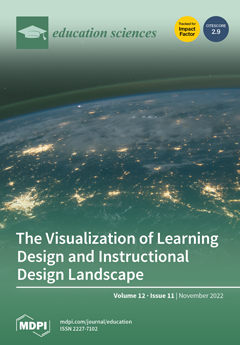It has been suggested that parental mathematics anxiety may influence their children’s mathematics anxiety, attitudes, and performance. It remains an open question whether these parent-child associations differ by parental sex or parental involvement. We tested 249 Dutch-speaking Belgian participants, forming 83 (biological) mother–father–child
[...] Read more.
It has been suggested that parental mathematics anxiety may influence their children’s mathematics anxiety, attitudes, and performance. It remains an open question whether these parent-child associations differ by parental sex or parental involvement. We tested 249 Dutch-speaking Belgian participants, forming 83 (biological) mother–father–child trios. The 83 children (age:
M = 5.74;
SD = 0.30) attended Kindergarten. We tested their nonsymbolic comparison, symbolic numerical magnitude processing, numeral recognition, arithmetic, and matrix reasoning. We assessed both parents’ arithmetic skills, math anxiety, educational level, and division of care. More math-anxious parents tended to be less highly educated (
r~0.42) and poorer at math (
r~0.30). Compared to fathers, mothers had lower arithmetic, higher math anxiety, and higher educational level. Assortative mating (i.e., a significant spousal correlation) was found for educational level and arithmetic. Mothers’ (but not fathers’) educational level predicted children’s arithmetic scores (
r = 0.31). Other parent-offspring correlations were non-significant. Most of the children’s test scores are intercorrelated. The parental characteristic that best predicted five- and six-year-olds’ arithmetic performance was maternal educational level rather than mathematical anxiety or performance. We discuss these findings in relation to the used measures, parental gender and involvement, children’s age, statistical power, and genetic and environmental transmission. The field is just starting to understand whether and how mathematics anxiety and the skills of parents influence those of their offspring.
Full article





